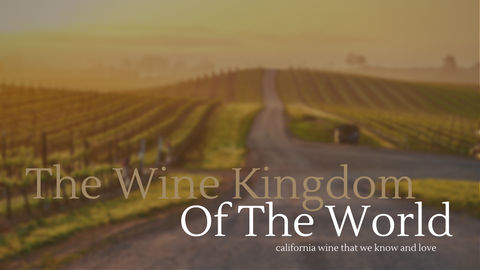Introduction
When we talk about the world of wine, there is one important distinction that we need to make: Old World vs. New World. This distinction can be tricky to understand at first, so let's start by breaking down what each term means.
First things first: The difference between old world and new world wine is not where it comes from. It has nothing to do with where the grapes are grown or how they're fermented; instead, it has everything to do with how they're classified by quality level (not unlike a grading scale) so that you can judge right upfront what kind of experience you will have with the bottle you choose."
Old world wine is the term for wine made primarily in Europe, but some Northern African and Middle Eastern countries are also considered to be old world.
Old world wine is the term for wine made primarily in Europe, but some Northern African and Middle Eastern countries are also considered to be old world. Old world wines are typically more expensive than new world wines, but generally have a longer shelf-life.
New world wine refers to wines from countries outside of Europe, particularly Argentina, Australia, Canada, Chile, China, New Zealand, South Africa, and the United States.
New world wine refers to wines from countries outside of Europe, particularly Argentina, Australia, Canada, Chile, China, New Zealand, South Africa, and the United States.
Old world wine—also known as European or Old World wine—is a term used for wines made in countries on the other side of the Atlantic Ocean from North America. This includes France (including Champagne), Italy (including Tuscany and Piedmont), Germany (Rheingau), Spain (including Rioja) and Portugal.
Some important things to understand about old world wine include:
- Old world wine is the term for wine made primarily in Europe, but some Northern African and Middle Eastern countries are also considered to be old world.
- What's the difference between old world and new world wines? Old World wines differ from New World wines in several ways, including their style of winemaking, flavors and origins.
It's much easier to find inexpensive high-quality wine.
It's much easier than ever to find inexpensive high-quality wine. In fact, New World wines are often more affordable than Old World wines, and the quality is higher overall. New World wines tend to be fruitier and less oaky (if you're into that), which makes them more appealing to casual drinkers who aren't particularly interested in the technical aspects of wine tasting. But if you really like a bold, tannic wine with lots of oak influence, have no fear—the Old World has plenty of options for your palate as well!
The grapes that make up the wine tend to be varieties native to the region--meaning that if you like a grape or a style of wine in one area, you'll likely prefer it in another similar region.
The grapes that make up the wine tend to be varieties native to the region—meaning that if you like a grape or a style of wine in one area, you'll likely prefer it in another similar region. The most common New World wines are made from grapes like Cabernet Sauvignon and Merlot, which are also found extensively in Europe.
The reason for this is simple: Old World winemaking was begun centuries ago by people who were focused on making their wines as good as possible with what they had available at the time. In other words, if you have access to great grapes from your own backyard and know how to properly cultivate them and make wine from them without outside interference (like refrigeration), why would you ever want anything different? That's why European vineyards have been producing high quality wines for hundreds of years!
There is an emphasis on terroir: how all of the elements of the land (soil type and composition, climate, terrain) impact the flavor of the grape and thus the wine made from it.
It is the combination of the land, soil type, and weather that determines what kind of wine grapes can be grown there. There are four primary regions in which wine grapes are grown:
- Old World: Europe, South Africa and Australia
- New World: California & South America
Wine is classified by quality level (not unlike a grading scale) so that you can judge right upfront what kind of experience you will have with the bottle you choose.
Wine is classified by quality level (not unlike a grading scale) so that you can judge right upfront what kind of experience you will have with the bottle you choose. There are many different quality levels, but the most common are "table wine", "fine wine", and "premium wine".
Table wines are inexpensive and fairly mass produced. They are not made to be aged, but should be consumed within five years if you're lucky. Table wines often have low alcohol percentages as well as high acidity, which makes them perfect for pairing with spicy foods! A good example of this would be Cava Rosado from Spain or Prosecco from Italy: sparkling whites that pair well with seafood dishes such as oysters or ceviche.
In general, old world wines are much more austere than new world wines. They may seem thinner or less complex because there is often less fruit flavor and alcohol content.
Some important things to understand about new world wine include:
- New World wines are usually fruitier, higher in alcohol content and more complex.
- New World wines are typically sweeter than Old World wines.
- New World wines are less austere than Old World wines.
New world varieties tend to be sweeter and fruitier than old world varieties.
New world wines tend to be fruitier, sweeter and less complex than old world wines. New world wines are generally made in a lighter style with less alcohol content than old world wines. The aromas and flavors of new world wine tend to be more intense and concentrated than those of old world wine because of the higher sugar levels in the grapes used for making them.
Conclusion
So, what do you think of the differences between old world wines and new world ones? Do you have a go-to variety?



